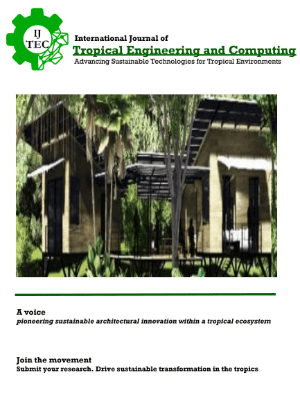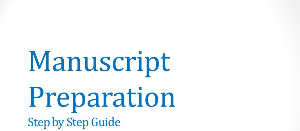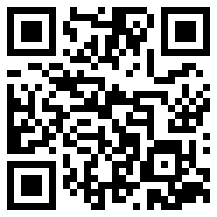Author Guidelines
Authors submitting to IJTEC must adhere to the following specifications:
a. Manuscript Format
- Language: English (British or American, but consistent throughout)
- File Type: Microsoft Word (.docx) or LaTeX (with accompanying PDF)
- Font: Times New Roman, 12-point, double-spaced
- Margins: 1 inch (2.54 cm) on all sides
- Page Numbers: Bottom-center of each page
b. Structure of Manuscripts
1. Title Page
i. Title: Provide a concise and informative title that accurately reflects the core focus and methodology of the research. Avoid abbreviations or ambiguous terms unless well-established in the field.
ii. Author Details: List the full names of all authors. Include each author's institutional affiliation with department, city, and country.
iii. ORCID ID: Provide the ORCID identifier for each author, if available, to support global researcher identification and indexing.
iv. Corresponding Author: Designate one author as the corresponding author and
include full contact information (email address and telephone number).
2. Abstract
i. Provide a structured summary of the manuscript, ranging between 150–250 words.
ii. The abstract should succinctly summarize the:
- Research background and objective
- Methods used (experimental, theoretical, or computational)
- Key results obtained
- Major conclusions and implications
The abstract must be self-contained and should not include references or undefined acronyms.
3. Keywords
i. Include 4 to 6 relevant keywords or key phrases that accurately reflect the content of the manuscript.
ii. Keywords should be separated by semicolons (;) and ordered from general to specific.
ii. Ensure keywords are optimized for search engines and indexing databases.
4. Introduction
- Provide a clear overview of the research context and relevant background.
- Identify the knowledge gap and the motivation for the study.
- State the research question, objectives, and the scope of the investigation.
- Briefly mention the methodology or approach and highlight the original contribution of the work.
5. Materials and Methods
- Describe all experimental procedures, theoretical models, software architectures, algorithms, datasets, and instruments used.
- For computational work, specify tools (e.g., MATLAB, Python, TensorFlow), configurations, and parameters.
- For theoretical research, detail assumptions, equations, models, and boundary conditions.
- Ensure the methodology is reproducible by other researchers.
6. Results
- Present the main findings in a clear, objective, and logically structured format.
- Use figures, tables, graphs, and diagrams to enhance clarity.
- Number figures and tables consecutively (e.g., Figure 1, Table 1) and provide descriptive captions.
- Avoid interpretation in this section—focus on factual reporting.
7. Discussion
- Interpret the results in the context of the research objectives and existing literature.
- Highlight novel insights, trends, and implications.
- Discuss any limitations, potential sources of error, and propose future directions for research.
8. Conclusion
- Summarize the key outcomes and contributions of the study.
- Emphasize the significance and relevance of the findings to the field.
- Do not introduce new data or interpretations.
9. Acknowledgments
- Credit individuals, institutions, or agencies that provided technical, financial, or advisory support.
- All acknowledged parties must have given their consent.
10. Conflict of Interest Statement
- Authors must disclose any financial or non-financial conflicts of interest.
- If none exist, explicitly state:“The authors declare no conflict of interest.”
11. References
- Include a comprehensive list of all sources cited within the manuscript.
- Ensure accuracy, completeness, and consistency in reference formatting.
Referencing Style Options:
i. APA 7th Edition or IEEE style is accepted.
- Specify your preferred referencing style at the time of submission.
ii. References must include:
- Author(s)
- Year
- Title
- Journal or conference name
- Volume, issue, page numbers
- DOI (if applicable)
iii. All in-text citations must correspond to entries in the reference list.
12. Tables and Figures
- Number sequentially (e.g., Table 1, Figure 1).
- Provide clear and informative titles and captions.
- All visual elements must be cited in the main text and placed close to their first mention.
- Submit figures in high resolution (minimum 300 dpi) in TIFF, JPEG, PNG, or EPS format.
13. Supplementary Materials (Optional)
i. Supplementary files may include:
- Datasets
- Source code
- Algorithms or derivations
- Appendices
ii. Submit these as separate files, with clear descriptions and in formats compatible with long-term access (e.g., CSV, TXT, PDF, ZIP).
ii. Clearly refer to supplementary materials in the main manuscript (e.g., “See Supplementary Table S1”).
14. Ethical Declarations
i. Manuscripts involving human participants or animal subjects must include:
- Ethics approval statement from a recognized institutional review board or ethics committee.
- Confirmation of informed consent (for human participants), including consent for publication if applicable.
ii. Research involving data scraping, biometric data, or surveillance must discuss data privacy compliance (e.g., GDPR, HIPAA).











